If you look closely at any tire, you can find an engraved DOT number. This number gives you valuable insights into the tires keeping you safe. However, it is not always clear to drivers what their DOT number is communicating. The local auto mechanics are here with the full breakdown of how to read a tire’s DOT number.
Every tire identification number begins with the letters DOT (Department of Transportation). It is a marker that verifies you are getting tires that meet the Department of Transportation’s guidelines. It also serves as a clear, universal starting point for a tire’s TIN (tire identification number).
The next group of numbers contains two characters that indicate your tire’s plant code. Every tire manufacturing plant has a unique two-character code, often made with one number and one letter. Why is this important? If there is a tire recall, safety issue, or another tire concern, it can be traced back to the plant that produced the tire(s) in question.
The next two numbers or letters are your tire size code. The tire size code is a little less straightforward than other markings. Originally, the National Highway Traffic Safety Administration (NHTSA) had a universal list of tire sizes and the two-digit codes that represented them. However, the DOT now lets manufacturers determine their own code for tire size, according to the US Federal Register. This change was intended to make it easy for manufacturers to produce new tires without requiring the NHTSA to update its code list. Unfortunately, it makes it challenging to translate the tire size on your tire’s DOT number. Thankfully, there is an easier way to tell your tire size (more on this below).
The third set of values indicates the manufacturer’s characteristics. It is essentially a space for manufacturers to provide tire distinction or other brand-specific insights. The US Federal Register states, “The third grouping may be used at the manufacturer’s option to provide any other significant characteristics of the tire. Except for cases in which a tire is manufactured for a brand name owner, the third grouping is not required.” Manufacturers then submit their list of codes to the National Highway Traffic Safety Administration.
Except for cases in which a tire is manufactured for a brand name owner, the third grouping is not required.” Manufacturers then submit their list of codes to the National Highway Traffic Safety Administration.
Much like the tire size code, this grouping often does not provide valuable information for drivers. It is more so used for recalls, errors, and other official identification needs.
Without ever touching the road, a tire can go bad simply due to its age. After 5 years of age, tires begin experiencing thermo-oxidative degradation. This chemical reaction can severely impact tire safety on the road.
The final four digits on your DOT number will tell you the tire’s age. The first two numbers of this grouping indicate the week of the year your tire was manufactured. The final two digits indicate the year that your tire was manufactured. For example, if your final four DOT numbers are 3020, your tire was manufactured in the 30th week of 2020. You can find more information in our full guide to tire age here.
While DOT numbers are helpful, they might not tell you everything you need to know about your tires. As tire experts, we often have customers ask:
Many drivers expect to find the answers to these and other questions in their DOT number, but this is not the case. Tires brands often include additional insights on the face of the tire. However, it is frequently much easier to view tire information on your tire panel. If you open your driver’s-side door and turn to face the seat, you will find a sticker against your door frame with information about your tires. You can also find additional details in your owner’s manual.
When you are due for new tires, the mechanics at Chapel Hill Tire are here for you. We proudly serve the greater Triangle area with our 9 locations across Raleigh, Apex, Durham, Chapel Hill, and Carrboro. Our mechanics also commonly serve nearby areas, including Knightdale, Cary, Pittsboro, Wake Forest, Hillsborough, Morrisville, and beyond. You can conveniently buy your new tires online using our Tire Finder tool. For all of your tire services, vehicle services, and car care needs, make an appointment today with your nearest Chapel Hill Tire.
We proudly serve the greater Triangle area with our 9 locations across Raleigh, Apex, Durham, Chapel Hill, and Carrboro. Our mechanics also commonly serve nearby areas, including Knightdale, Cary, Pittsboro, Wake Forest, Hillsborough, Morrisville, and beyond. You can conveniently buy your new tires online using our Tire Finder tool. For all of your tire services, vehicle services, and car care needs, make an appointment today with your nearest Chapel Hill Tire.
Back to Resources
Are you having difficulties reading the DOT number of your tires? Do you want to know how to read tire date codes? If you have lost the receipt of your purchase, you might be having difficulties knowing the exact age of your tires. This issue is common and you can find the solution from your tires. Just observe your tires, you will get the answer.
Just observe your tires, you will get the answer.
*Picture Copyright: UTires.com
How to Read Tire Date Codes?Whether you are financing your tires or purchasing them, it is important to understand how to read tire date codes. The numbers are present on tires only. You just need to know how to get them. You might have difficulties while reading codes on old tires. Keep reading to know how old your tire is.
Ways to Get Your Tires DOT NumberLook at all the sides of the tires. There are a bunch of numbers and letters. It might seem like a jumble. But this is helpful information about the tire. Find the number that starts with DOT and followed by ten to twelve series. This code will reveal a lot of things about your tires. You will know the tire size, year, and place of the manufacturing with the unique code of the manufacturer. You can also rent a wheel payments to know more about tires. Once you rent a tire payments, you will not have to be bothered about the manufacturing year.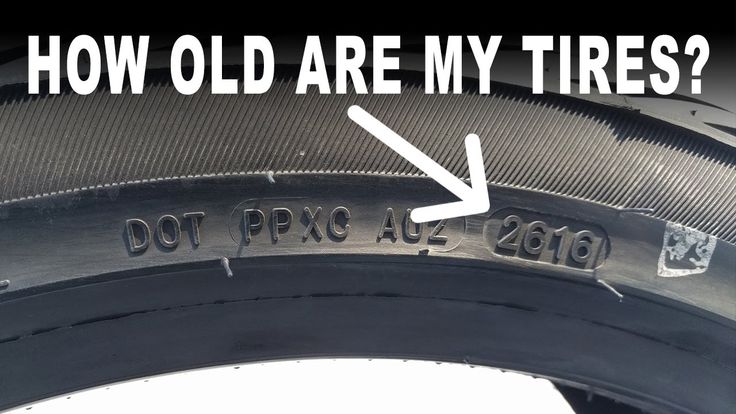 They will take care of this. You just need to look for a rent a wheel return policy to make it more beneficial for you.
They will take care of this. You just need to look for a rent a wheel return policy to make it more beneficial for you.
Remember that the last four digits of the code are the date the tire was manufactured. You can check the first two digits of the DOT code to know the week of the manufacturing. The last two digits will reveal the manufacturing year. For instance, when it was written in 0203, the manufacturing year was 2003. But it is a bit tricky to know the manufacturing year of tires manufactured before 2000.
Tires Manufactured Before 2000You need to check the last three digits of the DOT code. Check the first two digits to know the week. For instance, when the last three digits read 022, you should understand that the tire was manufactured in the 2nd week of that year. You might be thinking about how to know the year. The year is the 2nd year of that decade. It is easy to get confused to know the decade.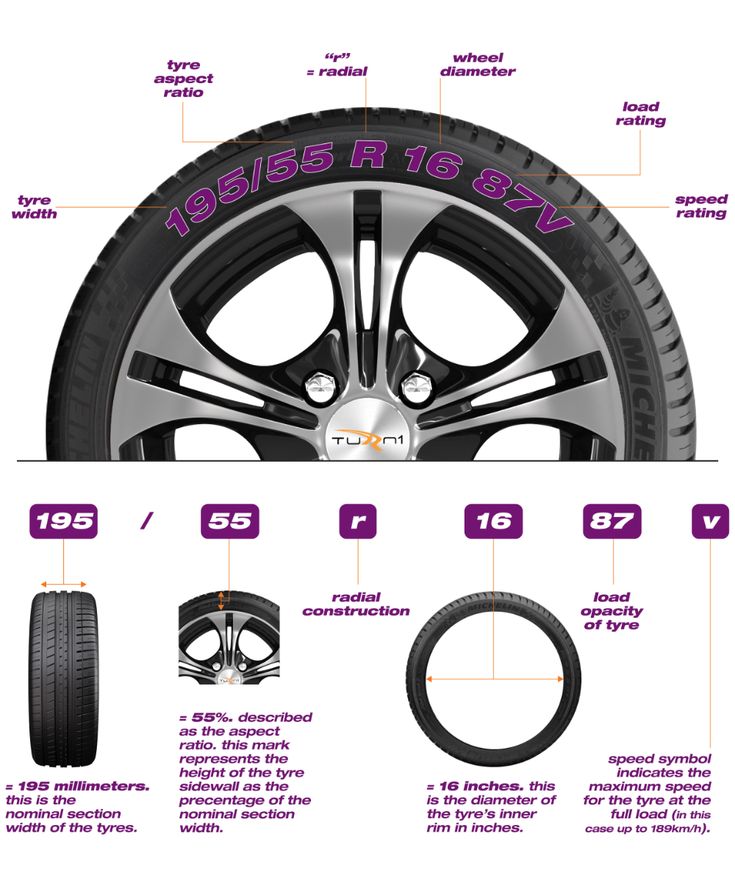 It might be harder to know the exact decade. There might be some other indications to know the year.
It might be harder to know the exact decade. There might be some other indications to know the year.
*Image Copyright from kilgoretirecenter.com
What About the Incomplete DOT NumbersIncomplete DOT numbers mean the current DOT regulations demand the complete number to be written on one sidewall only. When you find a few digits on the opposite sidewall, you can check the other sidewall to find the complete DOT number.
Reading DOT Tire NumbersNow you know how to read tire date codes. You can simply check at the sidewalls of tires to avoid any further confusion. Also, never lose your purchase receipt. If you do so, you might not get the warranty benefits. So, keep the receipts in a safe place and avoid any confusion by checking the DOT code. Whether you are interested in learning about wheel alignment or more about DOT numbers, our professionals here at Dan the Tire Man can answer your inquiries.
From this set of letters and numbers, you can pull out the entire amount of information - from the brand name and manufacturer to the release date and batch number. Part of the information encrypted in the DOT code is not even contained in the tire markings. Therefore, the DOT code on tires is useful for both the retailer and the buyer.
Part of the information encrypted in the DOT code is not even contained in the tire markings. Therefore, the DOT code on tires is useful for both the retailer and the buyer.
The US Department of Transportation came up with this encoding. Indeed, according to the laws of this country, until 2003, the US Department of Transportation was responsible not only for roads, but also for safety on them. And the characteristics of car tires affect road safety a little more than completely. To verify this, try driving on the road with tires of the wrong season or worn out tread.
Under the pressure of the aftermath of the 9/11 tragedy, the US Department of Transportation lost its right to oversee road safety, but the tradition of marking car tires with a special code developed by the Department of Transportation has survived to this day. Therefore, now we can take any tire, read and decipher its DOT code, and find out all the ins and outs of this product.
Before deciphering the code on tires, you need to know where it is located. In most cases, the DOT code is applied to the side, placing it above the landing board.
For example, the initial marking 4B in the DOT number of a Goodyear tire 4B9Z 747R 3909 indicates the plant and country of manufacture. If we decipher this information, we will see that the tire was made at the Goodyear Canada, Inc. plant, which is located in the city of Napanee (Ontario). The next two characters - 9Z - indicate that the model belongs to the tire segment for passenger cars of a particular brand. The second block of four characters - 747R - indicates the size, repeating the markings on the sides (175 / 65R14). The last four characters allow you to decipher the designations of the week (39) and year (2009) of release.
The second block of four characters - 747R - indicates the size, repeating the markings on the sides (175 / 65R14). The last four characters allow you to decipher the designations of the week (39) and year (2009) of release.
As you can see, the DOT number 4B9Z 747R 3909 really contains all the information about a particular Goodyear model. But in order to decipher it, you need to know the "inner kitchen" of the manufacturer or be able to use special applications.
Summer Drive Protection Sound Comfort
Rating:
4.5
Tires Goodyear Eagle F1 Asymmetric 3 SUV
Summer Drive protection
Rating:
4.5
Tires Goodyear Eagle Sport TZ
Summer Drive protection
Rating:
4.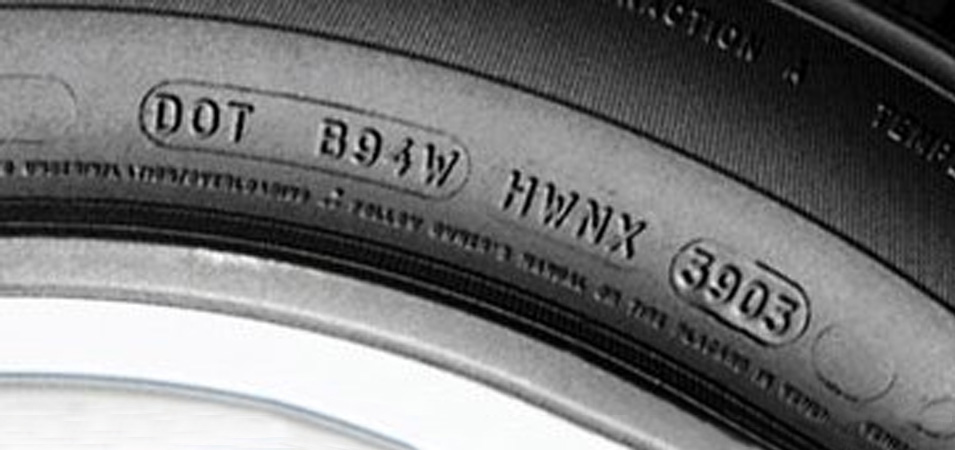 5
5
Tires Goodyear EfficientGrip 2 SUV
Summer Drive Protection Run On Flat
Rating:
4.5
Tires Goodyear EfficientGrip Performance
Winter Drive protection
Tires Goodyear UltraGrip Arctic 2 SUV
Winter Drive Protection Sound Comfort
Rating:
4.5
Tires Goodyear UltraGrip Ice 2
Winter Drive Protection Sound Comfort
Rating:
4. 5
5
Tires Goodyear UltraGrip Ice SUV
Winter Drive protection
Tires Goodyear UltraGrip Performance+ SUV
All season Drive protection
Rating:
5
Tires Goodyear Vector 4Seasons Gen-3 SUV
Summer Drive Protection Run On Flat
Rating:
4
Tires Goodyear Wrangler HP All Weather
All season Drive protection
Rating:
4.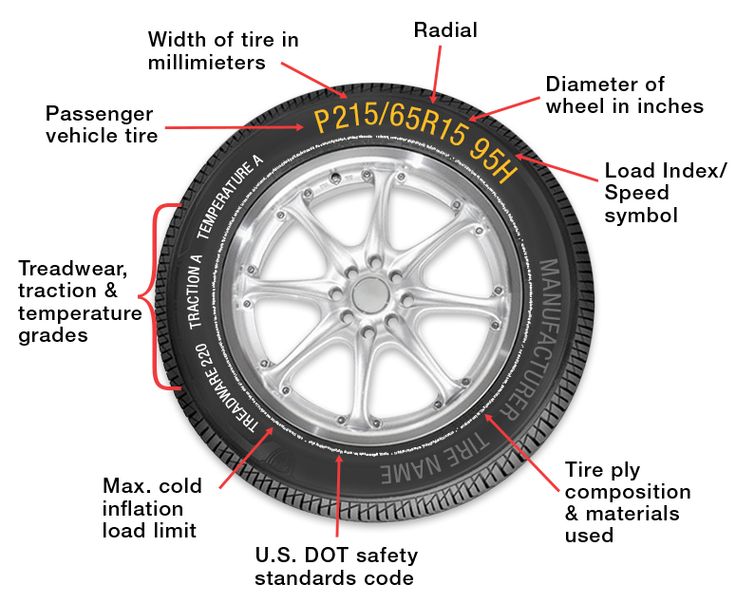 5
5
Tires Goodyear Vector 4Seasons
Summer
Rating:
4.5
Tires Goodyear Wrangler All-Terrain Adventure with Kevlar
Summer Drive protection
Rating:
4.5
Tires Goodyear EfficientGrip SUV
Summer Drive Protection Run On Flat
Rating:
4
Tires Goodyear Eagle F1 Asymmetric SUV
To decipher the DOT coding, you will have to find tables of brand and factory designations, as well as find out the internal codes for the tire range.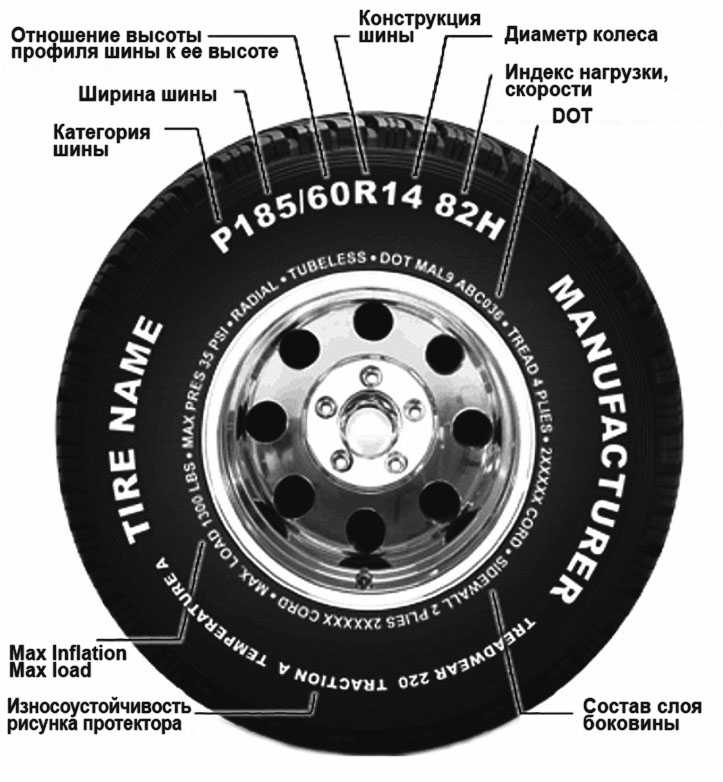 This is not the most common information - manufacturers are in no hurry to share their secrets, which include the internal encoding of models.
This is not the most common information - manufacturers are in no hurry to share their secrets, which include the internal encoding of models.
If you want to decrypt DOT code effortlessly, download it to your phone or find an application for decoding on the Internet. To do this, just drive in the search line "decrypt the encoding" and follow the link.
The decoding process using the application does not take long. You take a photo of the DOT or enter all the characters following this abbreviation into the appropriate fields. If there are no errors in the encoding, the program will give you the name of the manufacturer, the name of the plant, the release date and other information. Otherwise, the program will report that it is impossible to decipher the marking, referring to some reason.
DOT code decryption is finished, but why did we try? Is this information useful? Of course, yes. First, we have learned to distinguish an original product from a fake. For example, Goodyear puts DOT on American, Canadian, German, Malaysian and Thai tires. Therefore, as the first two characters, buyers of such tires see: MD, MJ, M6, MB, MC, MK (USA), ND (Germany), PC, 4B, PD (Canada), T8 (Malaysia), NY (Thailand), NP (Mexico). Knowing these codes, you can decipher the country of manufacture without a reference book. And if under the name of the Goodyear brand there is a DOT number different from those indicated, such a tire is a fake.
For example, Goodyear puts DOT on American, Canadian, German, Malaysian and Thai tires. Therefore, as the first two characters, buyers of such tires see: MD, MJ, M6, MB, MC, MK (USA), ND (Germany), PC, 4B, PD (Canada), T8 (Malaysia), NY (Thailand), NP (Mexico). Knowing these codes, you can decipher the country of manufacture without a reference book. And if under the name of the Goodyear brand there is a DOT number different from those indicated, such a tire is a fake.
Secondly, we were able to determine the exact age of the tire. To do this, just look at the last four digits and decipher them, acting according to the following principle:
That is, the number 1014 means that this model was released on the 10th week (in March) of 2014. And behind the cipher 3909 is the 39th week (October) of 2009. Knowing this trick, you will not buy expired wheels under any circumstances. After all, the life of any model should not exceed five years from the date of issue of the tire.
After all, the life of any model should not exceed five years from the date of issue of the tire.
Unfortunately, unscrupulous sellers resort to masking the expiration date, updating the appearance of the tire with special sprays and paints. Therefore, every car owner should know the rules for designating the release date in the DOT encoding. Well, if you saw damage to the last digit, then you should know that this is an attempt to disguise information that is unfavorable for the seller by cutting off the year of manufacture.
You may be assured that this particular manufacturer has three digits for the date, but this information is not true. Three digits denoted the year of issue in the 80s of the 20th century. From 1990 years date put only with the help of four digits.
Business
Tire marking
and tires
Registration in the Chestny ZNAK system is a necessary requirement
for everyone participants in the circulation of labeled products
To come in
Register in the Chestny ZNAK system and go through all the necessary steps to prepare your enterprise for marking, depending on the type of participation of your organization. The steps are accompanied by detailed instructions and video tutorials.
The steps are accompanied by detailed instructions and video tutorials.
Recommendations for placing the code
To ensure the necessary contrast between the background and the image of the symbol in order to guarantee its reading and recognition, the size cannot be reduced. free zone. The most preferred methods of applying means of identification, when a black Data Matrix character is imprinted in a white area, highlighted in the design. In the production of primary packaging / labels / stickers with plotted with Data Matrix symbols, it must be taken into account that the execution technological operations such as varnishing, laminating, after applying the marking symbols to the surface of the primary packaging/labels/stickers, may degrade characters Data Matrix to the level that prevents the introduction of marked goods into circulation.